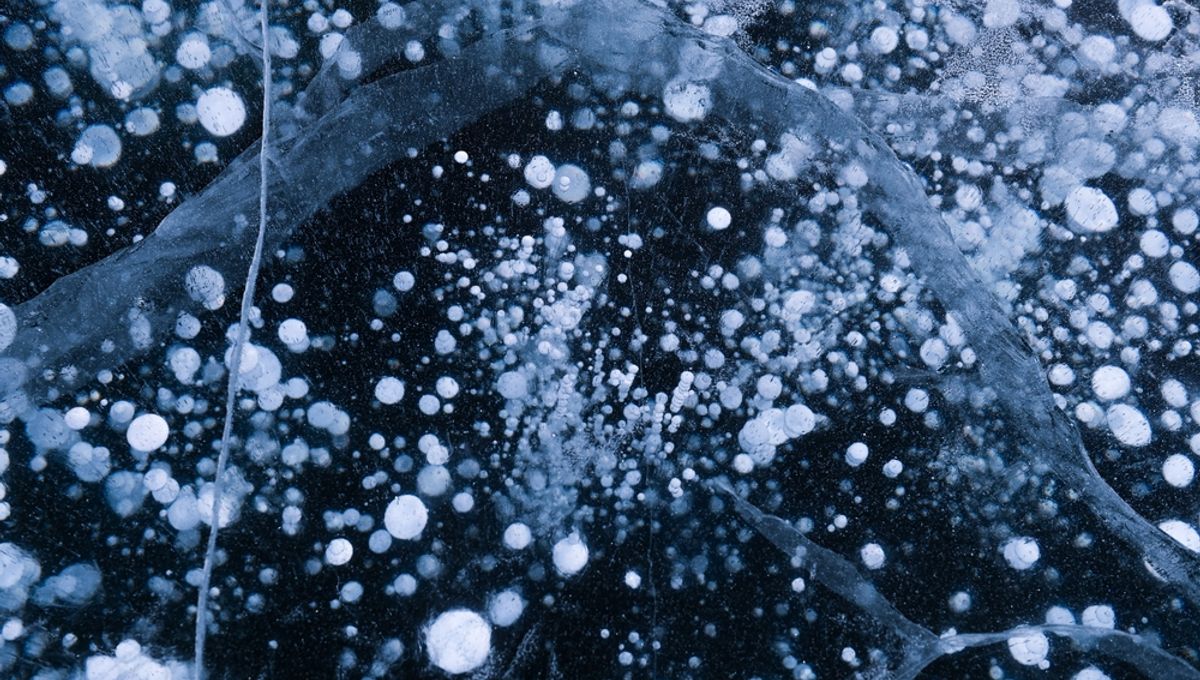
Researchers in Sweden have discovered a large and unusual methane leak in the depths of the Baltic Sea. The leak, which is estimated to be around 20 square kilometers (7.7 square miles) in size, is releasing masses of gas bubbles that are making their way to the surface.
What is methane?
Methane is extremely worrying. As greenhouse gases go, it is about 80 percent more potent than carbon dioxide and is responsible for about 30 percent of the global rise in temperatures. The gas is formed from microorganisms that live in the sedimentary layers of the seabed and convert organic material, usually long-dead plankton, into methane. Once produced, it can be released into the atmosphere by naturally occurring fissures or by human activity.
It is worth noting that there are other sources of methane as well, including human-made ones related to livestock, landfills, and the use of fossil fuels.
The Baltic Sea leak
In August this year, researchers from Stockholm University and Linnaeus University, Sweden, found a huge leak while exploring the deepest part of the Baltic Sea – the Landsort Deep (Landsortsdjupet), which is about 30 kilometers (18.6 miles) from the nearest coastal town. The leak is located 400 meters (1,300 feet) below the ocean surface and is thought to be around 20 square kilometers (7.7 square miles) in size. This is the equivalent of about 4,000 soccer pitches.
“We know that methane gas can bubble up from shallow seabeds near the Baltic Sea coast, but I’ve never seen such intense bubbles before and definitely not from such a deep area,” researcher Christian Stranne said in a statement.
The team were looking to expand our knowledge of methane, its sources and its sinks, in oxygen-free environments, such as at the deepest part of the Baltic Sea.
“Knowledge about the factors that control how much methane is produced in these deeper areas and where the methane goes is limited,” Marcelo Ketzer, the project leader and professor of environmental science at Linnaeus University, explained.
“How does the system react to, for example, eutrophication or a warmer climate? I knew from one of my previous projects that the methane levels in the sediments in this area are higher than elsewhere in the Baltic Sea, but I never expected methane to bubble out into the sea in this way.”
During their work, the team collected a large number of sediment cores and water samples that will hopefully allow them to answer why so much methane is being released in this area.
“We already have a pretty good idea of why it looks the way it does. The size of the sediment grains in the area and the form of the sea floor gives us an indication. It seems like deep ocean currents are causing sediments to accumulate in this particular area, but we need to do more detailed analyses before we can say anything definitive,” Ketzer added.
Another interesting aspect of this discovery is that the methane is travelling unusually high up through the water column.
“At the depths we are working with here, you can expect the methane bubbles to reach at most perhaps 150–200 meters [492-656 feet] from the seabed. The methane in the bubbles dissolves in the ocean and therefore they usually gradually decrease in size as they rise towards the sea surface,” Stranne explained.
“It is actually quite a complicated balance between pressure effects and diffusion of gases that together determine how size and gas composition develop in a bubble, but the net effect for smaller bubbles is that they lose both size and rise velocity with increased distance from the bottom.”
Alarmingly, the researchers saw the bubbles rise to 370 meters (1,214 feet) from the seabed. This can occur, they explained, because bubbles from deep sediments can be coated in “frozen methane” which forms around them. However, the situation here is different.
“This summer I participated in a French expedition to the Amazon outlet where we observed bubbles rising up to 700 meters [2,297 feet] above the seabed,” Stanne noted. “But I don’t know of any study where such persistent bubbles have been observed at these depths – it could be a new world record, and it could force us to re-evaluate the role of deep basins in the Baltic Sea, in terms of contribution to the surface water methane content.”
What are the explanations?
The reasons for this strange phenomenon remain unclear. According to the sonar, bubbles are making it as high as about 40 meters (131 feet) from the surface. It is possible that some are going substantially higher than this.
One explanation may be that the bubbles are quite large, which is allowing them to make that far. However, Stranne and colleagues have other thoughts.
“Rather, we believe that it is linked to the oxygen-free conditions in the deep water of the Baltic Sea. If there is no oxygen, the levels of dissolved methane in the ocean can be relatively high, which in turn leads to the bubbles not losing methane as quickly. The bubbles are thus kept more intact in this environment, which means that methane transport towards the sea surface becomes more efficient,” Stranne said.
“It is a hypothesis that we are currently investigating and if it proves to be correct, it could have consequences – if the oxygen conditions in the Baltic Sea deteriorate further, it would probably lead to a greater transport of methane from the deeper parts of the Baltic Sea, but it remains to be investigated how much may leak into the atmosphere.”
Worryingly, the team believe the leaks may not be limited to this site. It is possible there are similar ones elsewhere in the Baltic Sea.
“Now we know what to look for and we look forward to testing this model in other areas of the Baltic Sea with similar geological conditions. There are potentially another half dozen places to explore,” Ketzer added.
Source Link: Baffling And Huge Methane Leak Found In The Baltic Sea